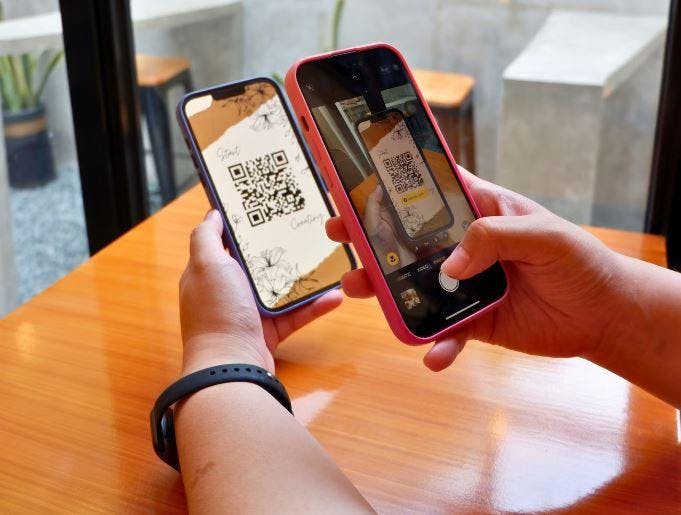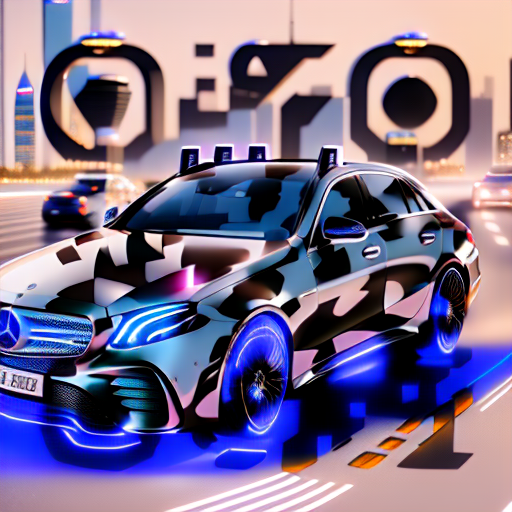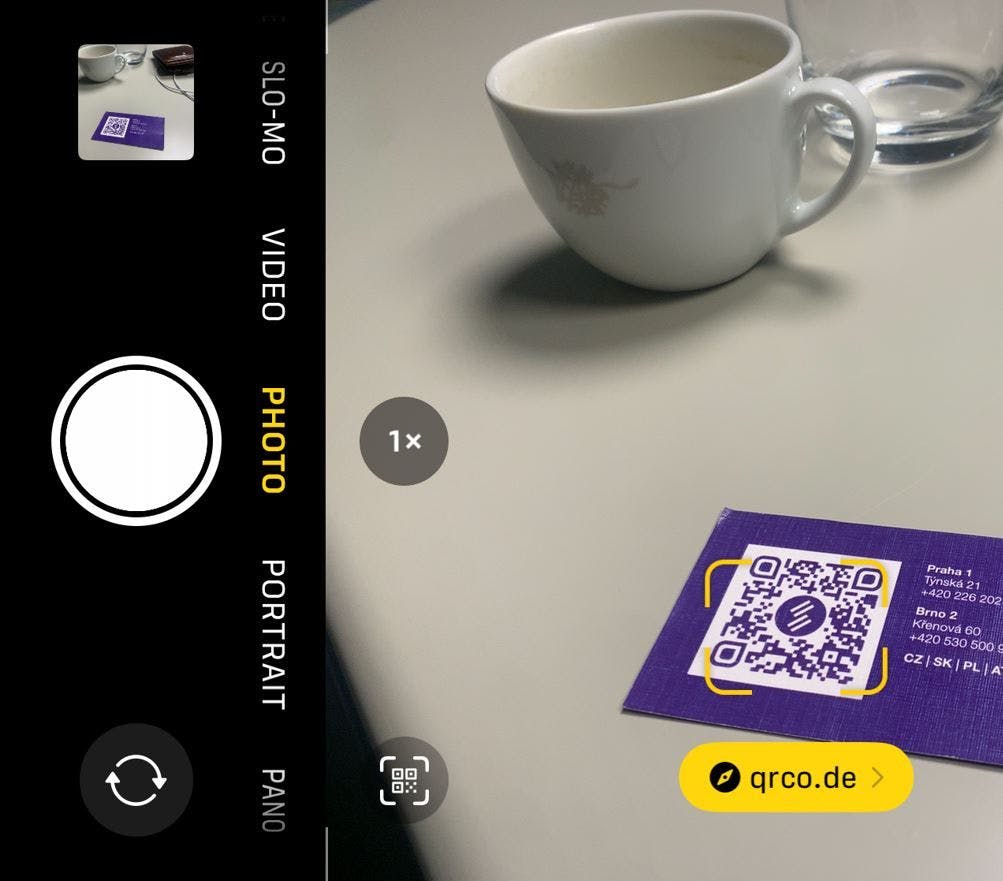How do QR Codes Work Technically - Complete Guide
QR codes are everywhere. But how do QR Codes work technically?
Have you ever wondered what secrets QR Codes hold and how to crack their code? We've all been there, feeling a bit lost in this digital maze.
In this guide, we demystify the QR code technicalities and find out how exactly do QR Codes work. We will also discuss:
- How are QR Codes generated?
- QR Codes features and benefits over barcodes
- How are QR Codes encoded and decoded?
- Are QR Codes Safe?
By the end of this guide, you will pretty much know everything there is to know about QR Codes technical functionalities.
What are QR Codes?
You may have noticed maze-like little squares popping up everywhere - on product packaging, restaurant menus, billboards, your smartphone apps, and even on event tickets.
Well, these little squares are digital information maps called the QR codes, short for Quick Response codes.
How do QR Codes Work Technically?
QR Codes are smart squares encoding important information which can only be retrieved upon scanning via a QR Code scanner.
Some smartphones also have built-in QR code scanner which redirects you to the information source once you scan the QR.
Here’s what happens behind the scenes when you scan a QR Code:
- Scanning and Decoding: Your smartphone's camera scans the QR code, capturing the pattern of black and white squares.
- Error Detection: The scanner then analyzes the pattern and identifies the position of three unique squares that act as orientation markers. These markers help the scanner correct any distortions that might have occurred during scanning.
- Data Extraction: The QR code's data is extracted, revealing the treasure it holds. This could be a website URL, contact information, a Wi-Fi password, or anything else the creator embedded.
- Action Time: Based on the extracted data, your smartphone takes appropriate action. If it's a website URL, your browser opens the link. If it's contact information, you may have the option to save it to your address book.
Isn't it simple yet so fascinating?
QR Codes are being used in several industries like retail, marketing, healthcare, tourism, and more.
From simplifying the customer experience to enhancing marketing campaigns, QR codes are revolutionizing human interaction with technology encoded information.
Tidbit: Do You Know When Was the First Ever QR Code Created?
QR codes were invented in Japan back in the '90s. These codes were initially meant for tracking vehicle parts during manufacturing.
Source: https://www.britannica.com/technology/QR-Code.
Soon, these codes gained more popularity - breaking free from factory chain and spreading across the globe.
Fast forward today, QR Codes have become an indispensable part of our daily life.
Their simplicity, efficiency, and versatility make them an integral part of modern technology.
QR codes offer website redirect access, contact information sharing, payment transactions, and Wi-Fi Connectivity. Moreover, you can also use them to find each others’s social profiles.

Source: Canva
QR Codes vs. Barcodes: Why QR Codes are Winning
So, you might wonder, "Why should I care about QR codes when we already have those good old barcodes?"
That is a Great question!
QR Codes offer several useful advantages over traditional barcodes, such as:
More Information Storage:
Barcodes can only hold a limited amount of data, like a product's SKU or price. QR codes, on the other hand, can store URLs, contact details, product information, and much more. They are like digital storage wizards, squeezing in loads of data effortlessly!
Faster Scanning:
Traditional barcodes need a direct line of sight to be scanned accurately, while QR codes can be scanned from any angle. This means you can zoom in for that perfect scan without any hassle.
Error Correction:
QR codes have built-in error correction capabilities. Even if a part of the code is damaged or obscured, the data can still be retrieved. Barcodes lack this nifty feature, making QR codes more reliable and robust.
How do QR Codes Work: Tech Behind The Scenes
Here is a stepwise overview of how QR Codes work technically:
QR Codes Generation
Generating QR codes is a fascinating technological process. QR code generators are powered by advanced algorithms. QR code generator tools and their functionalities vary depending upon the tool you select.
QR Code Encoding:
Creating QR Codes with various data types is easy. You can use QR Code generators to feed your input data, such as website link, contact info, or any other details, and encode it into a unique QR code.
It's like giving your data a digital code displayed in an eye-catching pattern of black and white squares.
QR Codes Decoding:
QR codes might seem like just funky patterns, but in fact, they encode important information.
When you scan a QR code using your smartphone, the camera deciphers the square’s pattern and transforms it back into the original data.
It's like a communication system which converts the visual code into meaningful information.
So, here is how it goes:
- You input your information into a QR Code generator [Encoding]
- QR Code generator stores that information in a unique visual code [Decoding]
- A QR Code scanner detects the visual code and retrieves the information [Decoding]
At the end of the QR Code scan, many actions happen, like:
- Redirected to a website
- Access product details
- Share Wi-Fi credentials
- View personal information
- Retrieve restaurant menu
- Track data and information to its source
In other words, QR codes connect the physical information with digital coding.
Some Amazing Features of QR Codes
Here are a few reasons why QR Codes are gaining popularity:
Condense Large Data Into Small Squares:
Each QR Code square holds valuable information or a digital map leading the user to desired data destination. It means there is no limit to how much data you can store in a code.
Seamless User Experience:
QR codes offer a seamless user experience. With a simple scan, users can access a wealth of information without the need for typing or searching. It's a quick and effortless way to connect with digital content.
Versatile Information Communication:
From URLs to text, vCards to payment information, QR codes can handle various data types. Their adaptability makes them ideal for a wide range of applications in different industries.
Automated Error Correction:
QR codes come prepared for real-world imperfections. Their built-in error correction ensures that even if the code is damaged or partially obscured, the scanning device can still decode the data accurately.
Are QR Codes Dangerous?

Source: Canva
QR codes, on their own, are not inherently dangerous. In fact, they're quite handy for quick access to information and seamless interactions. However, like with any technology, it's essential to stay vigilant and be aware of potential risks.
Risks Associated with Malicious QR Codes
Malicious QR codes can lead you to harmful websites or prompt you to download malicious apps. It is because there is no way to preview a QR Code information - you have to scan to see the information. In some cases, that may not be safe.
But here is the silver lining: Some basic precautions can protect you from these traps.
Tips to Stay Secure When Using QR Codes
Scan QR Codes from Trusted Sources:
Stick to reputable websites, apps, and vendors when scanning QR codes. Avoid scanning codes from unknown or suspicious sources.
Be Careful with Links and Download Buttons:
If a QR code prompts you to download an app, double-check its legitimacy before proceeding. Only download from official app stores.
Use Updated QR Scanner Software:
Regularly update your smartphone's operating system and scanning apps. These updates often include security patches that protect against potential vulnerabilities.
Review the URL:
Before clicking on a URL from a QR code, check if it looks legitimate. Malicious codes may lead to URLs that look similar to real websites but have slight misspellings or extra characters.
Best Practices for QR Code Safety
While the risks are minimal when you're cautious, it's always a good idea to follow some best practices:
Get QR Code Scanning Apps:
Use reputable QR code scanning apps from trusted developers. These apps often have additional security measures in place.
Scan with Caution:
Avoid scanning QR codes in public places without proper context. For example, don't scan codes placed on random surfaces or in questionable locations.
Limit Sensitive Information Sharing:
Be cautious when sharing sensitive personal or financial data via QR codes. It's best to use them for non-sensitive information whenever possible.
Key Takeaways
QR codes are visual squares that hold valuable information. They are generated using special tools that turn data into unique patterns.
When you scan a QR code with your phone's camera, it decodes the pattern to reveal the hidden information. It's like solving a digital puzzle!
QR codes work by arranging data in a way that leads your scanning device to the desired information. They can handle various data types like website links, contact details, and more.
The best part? QR codes are super convenient, versatile, and even have error correction powers! They make data sharing a breeze.
But are QR codes dangerous? Not really! The codes themselves are safe, but it's essential to be cautious. Stick to trusted sources, be careful with downloads, and keep your phone updated.









